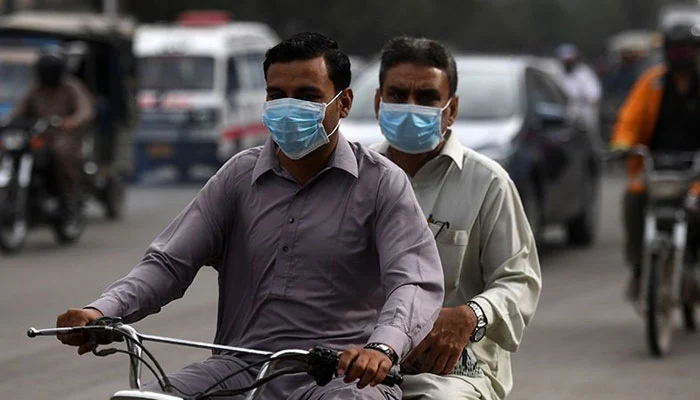ISLAMABAD: The News said on Wednesday that the National Institute of Health (NIH) Islamabad has stated that a particular strain of influenza virus, not COVID-19, is to blame for the severe respiratory illnesses that adults are suffering throughout Pakistan.
According to the Health Institute, thousands of cases of influenza-like illness (ILI) are recorded nationwide every day. The sickness is being caused by the H3N2 sub-type of the Influenza-A virus.
Respiratory Syncytial Virus (RSV) is the cause of pediatric illnesses in Pakistan, according to NIH officials. They advised people to adopt preventative steps, such as coughing manners, in order to shield themselves against respiratory infections.
“No, COVID-19 is not the cause of the current epidemic in Pakistan. A top NIH official told The News, “Our surveillance and testing suggests it is H3N2 sub-type of Influenza-A which is making people sick in Islamabad, Rawalpindi, numerous cities of Sindh, and most of Punjab these days.
According to the health authority, COVID-19 is being held responsible for respiratory ailments. Following 3,609 tests, just 16 cases were found nationwide last week, indicating that the COVID-19 positivity rate was still less than 1%, he said. He said that most patients were not being tested for the influenza-like disease or COVID-19.
The NIH official stated that reports of Severe Acute Respiratory Infections (SARI) were coming from Balochistan and Khyber Pakhtunkhwa.
During the 49th week of the year, about 46,000 cases of ILI were reported nationwide, with the exception of Punjab, according to NIH data. More than 25,000 ILI cases were found in Sindh, followed by 8,354 instances in KP, 7,856 cases in Balochistan, and 3,619 cases in Azad Jammu and Kashmir.
The majority of respiratory infections are reported from Punjab, and Punjab does not provide NIH Islamabad with its statistics. Therefore, the prevalence of respiratory diseases in Pakistan’s largest province is unknown to the authorities.
Renowned infectious diseases specialist Dr. Faisal Sultan commented on the influenza outbreak in Pakistan, stating that more cases of the illness were being diagnosed (since PCR is available at more centers). “It can occasionally last longer with weeks of exhaustion.”
It is recognized that in certain cases, a protracted convalescence may occur. Furthermore, problems (bacterial pneumonia) will be more common in the elderly and in people with other heart or lung diseases, according to Dr. Sultan.
In addition, Karachi’s pulmonologists and health professionals revealed that, relative to COVID-19, influenza A was the most often found virus in the city. According to them, it was seriously harming senior patients who were comorbid—that is, had many illnesses including diabetes, hypertension, etc.
“Influenza is the main cause. In Karachi, we have observed whole families afflicted with flu-like symptoms. The influenza-A virus has been identified as the source of respiratory illnesses, occasionally necessitating the hospitalization of elderly patients with coexisting conditions.
Young adults recover on their own since it is self-limiting, according to Karachi pulmonologist Dr. Raeef Ahmed.
He advised against using antibiotics to treat the flu, citing positive outcomes with the antiviral medication Tammy Flu in adult patients who were admitted to hospitals.
In response to a question about flu injections or the influenza vaccine, he stated that it was not sold in stores. He also mentioned that it was a little late to get vaccinated against the flu.
Famous epidemiologist Dr. Rana Muhammad Safdar advised people to avoid catching the respiratory disease by using the same safety measures they did during the COVID-19 epidemic.
Khyber Pakhtunkhwa, the federal capital, Punjab, and other areas have poor air quality and haze.







